Let me assure you that plenty of people use spreadsheets to run their businesses. This isn’t limited to just small businesses or solo projects either. Large companies and even entire departments of large companies often run solely on spreadsheets. So, if anyone says you can’t run your business on spreadsheets, they’re simply lying or don’t know what they’re talking about. You can!! In fact, in some ways spreadsheets can be better than custom software. Let’s take a look at two examples how.

Cost Benefits -
Probably one of the biggest reasons spreadsheets are excellent for running a business is cost. This cost savings comes from multiple layers but the main portion of it comes in the form of easily accessible technological knowledge and labor.
It’s part of standard elementary school curriculum today to teach children Excel or some sort of spreadsheeting application. In the work force it’s on nearly every job application that you be familiar with the Microsoft Office suite. Almost everyone knows how to operate a spreadsheet. So, when it comes time to keep track of some data, it’s everyone’s favorite swiss army knife, go to tool. This commonality makes spreadsheets an excellent way to organize and collaborate with data quickly.
With this skill being so widely known, it’s been devalued and no one charges an arm and a leg to build spreadsheets anymore. There’s no coding, no complicated query language, no long-time commitments, no additional hiring. All these things dramatically decrease the barrier of entry to tracking and organizing data. When new data needs to be tracked or organized differently, simple non-technical staff can add a column and be on their way. If your company had sprung for fully custom software instead of a spreadsheet, it’s possible with some platforms, that new column or data reorganization could cost thousands of dollars, coding new interfaces, moving data, etc.
So, when it comes to utilizing and updating spreadsheets, cost is very rarely high and a big win for xlsx files!
Time Benefits -
Time and Money. The standard ways we quantify things in business. While time and money are often treated like equals and traded, you can always have more or less money, however, you can’t get time back.
Spreadsheets often lend themselves to a lot of time savings when spinning up new projects. Say your boss puts you in charge of a new group of people or a new big project. It’s going to take you very little time to fire up a new spreadsheet and crank out some column names to suit your needs. This being opposed to commissioning or writing new software for the same task.
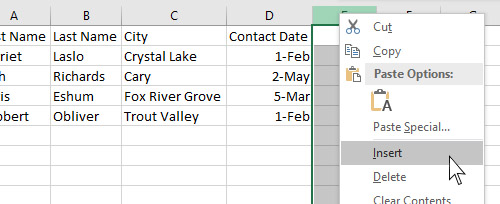
Additionally, as time goes on and your data changes or grows, it’s exceptionally easy to mold your spreadsheet into more of what you need also at a few clicks notice. The spreadsheeting tools we have these days haven’t changed much in the past few years but anyone who has ever used a VLOOKUP, transpose, or pivot table knows that you can do some incredible things with data pretty quickly in Excel.
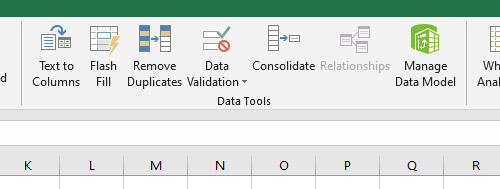
The ability to operate on your data visually and see its unobscured cell location lends itself to huge reduction of complexity which correlates to a big savings in time. Another big win for spreadsheets.
Downsides To Spreadsheets, But How To Fix Them!
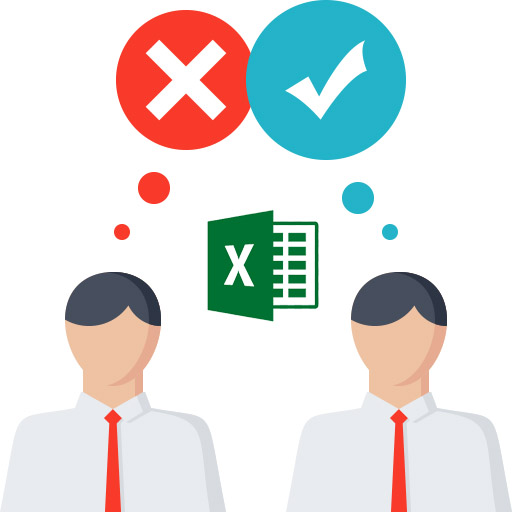
You’re probably thinking, why would you ever not use a spreadsheet? They’re agile, cheap, and everyone knows how to use them. How could you ever improve on that? Let’s go over the “Three C” issues that bog-standard spreadsheets usually possess and some potential solutions for them.
Consistency
Anyone who has ever seen a spreadsheet shared or managed by multiple people has seen the inconstancies that can occur within spreadsheets. Weird fonts, strange data, missing data, incorrect alignment, question marks, etc.
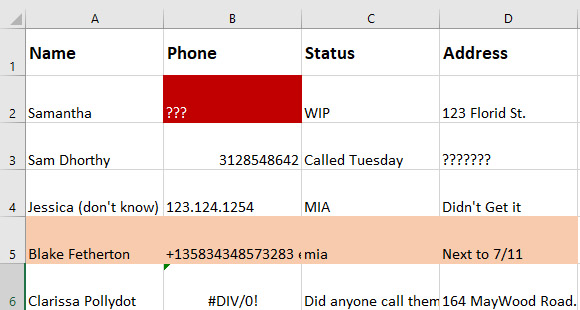
While Excel does have some tools to perform some validation within rows and columns, the feature is rarely used. Coupled by the incompatibility issues we all suffer from OpenOffice, Google Sheets, Apple Numbers, and others, it’s often just not worth the effort.
This isn’t a deal breaker at all for spreadsheets, it just means that someone is going to have to police data entry a little and if they feel so inclined, utilize some of Excel’s more complex features.
Collaboration
If you’ve ever shared an Excel file with more than 1 person before, you’ve certainly ran into the situations where you have to ask “Which version of the file is the newest version?”. With a workbook Xls or Xlsx file typically residing as a file local to multiple users’ computers at a time, it’s very easy to lose track of versions as they traverse emails, thumb drives and file sharing services. Additionally, a common complaint from spreadsheet users is not knowing who changed what data.

The first problem of which file is the newest can be mostly solved by some creative file naming and coordination. For example, dating the file, electing a single user as the updating user or having a token like system where users only modify the file when it’s in their possession.
The second problem is easily solvable by turning on auditing within Excel. This allows you to track changes to the file with user names and timestamps.
Complexity
The biggest challenge to working with spreadsheets usually centers around parent child relationship data. For example, say you have a “customers” spreadsheet to track all of the customers your business is working with. Additionally, let’s say these customers are repeat customers that continually buy things from your business. You most likely want to keep track of their past orders for bookkeeping purposes.

This is where spreadsheets start to get messy. We’ve seen people handle this situation many ways. To mention a few:
• Option 1 - Add columns to the right of the customer for tracking orders. When a new order comes in, insert a blank row under the customer and add the order information to the right.

• Option 2 - Add columns to the right of the customer for tracking orders. When a new order comes in, duplicate the customer row and fill in the order information on the right for better integrity.

• Option 3 - Add a new spreadsheet of just orders and copy the customers name here as well.
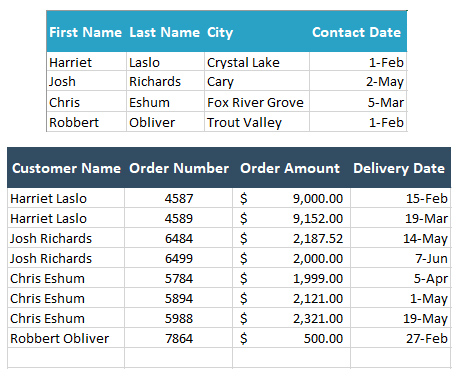
All of these options work, they just increase the complexity and work for the operator. As time goes on and this data increases, so do the risks. For example:
- The potential for accidentally shifting cells the wrong direction via adding or sorting.
- Needing to perform many changes because data exists in multiple places.
- Entering the wrong data in the incorrect place.
As we’ve said in other blog posts your data is extremely valuable. Having it at such risk for corruption is not cool. An incorrectly performed sort operation without a backup file can spell disaster in situations like this.
In our opinion we don’t believe there’s a wonderful solution to this problem within Excel but there are ways to represent this data better. Some people recommend pivot tables for data like this. Some people recommend utilizing the Visual Basic implementation within Excel to code a solution. Others recommend collapsible rows.
What's The Answer?

"To spreadsheet, or not to spreadsheet, that is the question..."
So what does it all mean? Should I use spreadsheets to run my business? The answer to this question as with many others is…. well… it depends. Below are our recommendations for when to use spreadsheets and when to give them the boot.
When You Should Use A Spreadsheet –
- When the project is new and its lifetime will be short or is uncertain.
- When you’re unsure of the data you will need to track and need rapid changes.
- When the data doesn’t contain a hierarchy.
- When you don’t need collaboration or the data is only operated on by a single person.
When You Shouldn’t Use A Spreadsheet
- When your data is mission critical to running your business.
- When you require rigidity surrounding your business processes and data.
- When you require simultaneous read and writes of your data by many users.
- When parent child data needs to be stored. Especially If the relationship is more than one layer deep!
What should you use instead of a spreadsheet in these above instances? Ah you guessed it! Yes, this article was written by a software company just waiting to pitch you on their project… kind of. Node14 can absolutely help you tackle any of the above-mentioned issues with a custom online database, however, we want people to know that it’s not always necessary. We love Excel and if we think Excel could do something for you better than we could, we’ll be the first to tell you that.
We invite you to schedule a free consultation with an engineer to discuss your spreadsheet stress and we’ll help you work through all your possible options, even if they’re not with us.
You Might Also Like This Article:
How To Be Successful In 4 Minutes With 4 Letters
Do you want to be successful? Do you have 4 minutes of time? We’ve got 4 letters for you that are the key.
Read More ⟶
